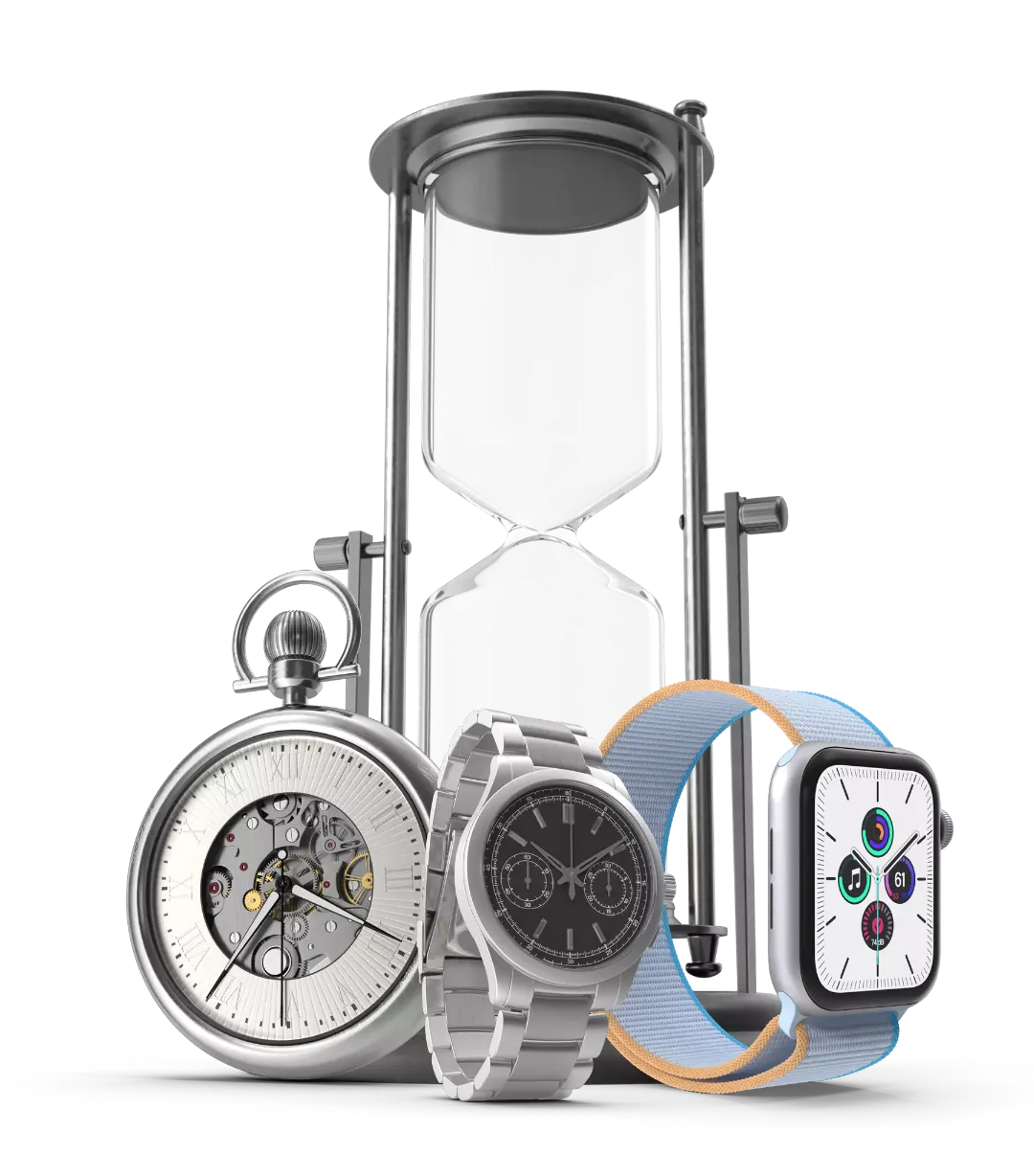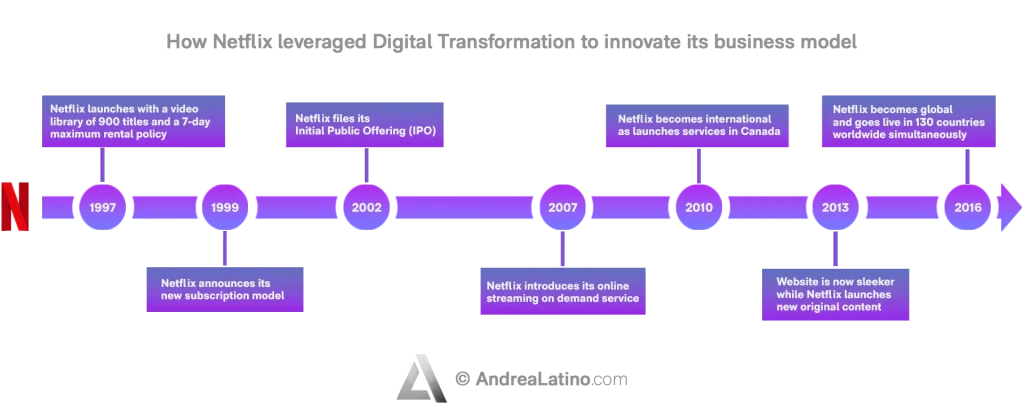Innovation alphabet
Digital Transformation
In a nutshell
Digital Transformation must be the main area of focus for a modern enterprise. It is an inevitable process of change that, when applied to a company’s vital processes, can have a disruptive effect. The shift to technology innovates the business model, redesigns the internal organization, and improves relationships with customers, suppliers, and consumers.


A major difference
Digital Strategy vs Digital Transformation

Before we begin, let’s highlight an important difference between these two similar terms.
Digital strategy is related to marketing, sales, and everything that is front-end with respect to the end consumer. The goal is to boost growth and revenue.
Digital transformation, on the other hand, includes everything that impacts on business models, processes, technologies, and skills of human beings.
Application Fields
• Business processes: Digitalizing business processes means rethinking, redesigning, and even “reengineering”. This allows a company to take advantage of the automation modules provided by modern technology platforms. The latter are themselves characterized by a homogeneous and integrated user experience regardless of which device is used (desktop or mobile). On the one hand, this speeds up operations by reducing manual steps (thus minimizing errors) and ensuring greater control and transparency over the execution of each task. On the other, it enables the collection of data that can then be compared and analyzed to verify the actual efficiency of processes.
• Working ecosystem: Digital ecosystems will be critical to the fulfillment of technology conversion. Dynamic markets are forcing companies to transform to remain competitive. Digital transformation has led to the emergence of web and IT-related figures that did not even exist before.
• Business models: Digital Transformation enables new business models or makes existing ones more efficient. If applied to marginal processes, the transformation is likely to have inconspicuous results; if applied to core processes, the outcome will be explosive.
Industries
• Digital Transformation in tech & entertainment industries
Netflix leveraged Digital Transformation to innovate its business model and that turned out to be the move that saved the company – previously solely relegated to DVD rentals – from extinction. In 2007, in fact, Netflix launched an online streaming video on demand service to supplement its initial service at no additional cost to its subscriber base. Today, Netflix is the most popular provider of digital video content.

• Digital Transformation in the software industry
As part of a Digital Transformation, Adobe made the risky decision to convert from a license-based company to a Cloud-based company. Today, Adobe operates entirely in digital media through three subscription-based models – Creative Cloud, Document Cloud and Marketing Cloud.
• Digital Transformation in digital imaging
Beginning in the second decade of the 2000s, the growing popularity of digital cameras led to a sharp decline in Fujifilm’s roll business, and the photography giant found itself on the brink of extinction. In 2012, the company decided to reinvent itself, entering several new markets, including pharmaceuticals and cosmetics. Here, Fujifilm created medical imaging equipment, digital X-ray diagnostics, and other technologies for the hospital sector. By deciding to embrace new technologies and expand its interests, the Japanese giant strategically diversified its profitability and became a significant player in the healthcare industry.
Do you have a Strategy & Innovation challenge to tackle? Let’s face it. Together.
C-levels from these companies (AND MORE) relied on my expertise to overcome thEIR CHALLENGES IN THIS AREA. And you can, too.
Can I help you?Business Functions
• Digital Transformation in support of customer loyalty.
Lego has done a great job in terms of customer engagement and retention relative to the study of new products. It probably could not have done it without the many opportunities offered by digital communication. Innovative projects include Mindstorm RIS (Robotic Investor System), the product line that combines programmable bricks with electric motors, sensors, and Lego Technic pieces designed to build robots and automated, interactive systems.
• Digital Transformation in support of customer proximity
The Generali Group company embarked on a Digital Transformation journey in 2011 in partnership with Microdata. Today, it is almost totally paperless in the management of incoming documents. But, most importantly, it can guarantee response times to clients and brokers that exceed market benchmarks. DAS has digitized the archive, building an integrated digital platform in which the management of incoming and outgoing documents is done quickly and easily, with benefits on both internal organizational processes and customer relations.
• Digital Transformation in support of process digitalization
Significant investments in research and development have enabled Dainese – an Italian manufacturer of technical equipment and protection for dynamic sports – to be recognized as a first-mover company in its target markets (which, precisely, range from clothing for motorcycling and extreme sports, to technical clothing for hostile environments, to aerospace safety). One of the most striking examples is the electronic airbag system for motorcyclists, D-air.
Stay in wonderland
Let me show you how deep the rabbit hole goes.
Check out more of the Innovation Alphabet:

3D Printing
3D Printing
“3D printing” is a process carried out by an electronic device which, instead of resorting to the canonical ink, it molds almost any kind of material: from concrete to living tissue, most usually plastic, but also metal. And the operating principle is similar to that of a traditional printer. The creation of three-dimensional models can lead to the redesign of a company’s production capabilities.
Dive In
5G
5G
5G is the new frontier of cellular telephony. It was designed to improve (or completely replace) previous generations of mobile networks. The 5th generation features lower latency, ensuring flawless performance of business applications and many other digital experiences – thus enabling the new cultural generations to furiously play Fortnite away from home.
Dive In
Advanced Analytics
Advanced Analytics
The term “Advanced Analytics” refers to the ability to autonomously or semi-autonomously analyze data and content to identify correlations, develop analyses, predictions, and recommendations. It is not just a matter of collecting information and then organizing it into watertight compartments: the ultimate goal is to identify a dialogue pattern from a data-driven perspective.
Dive In
Agile
Agile
Agile is an approach to software development designed to respond to change. Teams quickly analyze the context in which they operate, identify uncertainties faced, and figure out how to adapt to always move forward. Interaction between individuals comes before processes and tools; collaboration with the customer is more important than negotiating contracts.
Dive In
Ansoff Matrix
Ansoff Matrix
The Ansoff Matrix is a marketing planning model that arises from the intersection of new and existing products and markets. It derives four possible strategies for expanding the company’s market, which are built around four variables with a changeable factor of risks and possibilities: existing product, new product, existing market, new market.
Dive In
Artificial Intelligence
Artificial Intelligence
Artificial Intelligence is not strictly defined. Basically, it is a computer system able to make decisions in an independent and flexible way. A good AI application can perform everyday tasks better than an average person (e.g., identifying other people from their photos on social media or beating the best chess player). Nothing to fear, then. Unless you are a chess champion.
Dive In
Artificial Scarcity
Artificial Scarcity
We often tend to desire what we cannot have. Or what we are in danger of losing: Artificial Scarcity is a strategy that flaunts a limited number of items that do not correspond to actual availability. The goal is to stimulate the perception in consumers that the stock of items is about to run out and thus create a need based on the “fear of being cut off” or the intention to buy the item in order to resell it at a higher price.
Dive In
Attack Surface
Attack Surface
The term attack surface refers to the part of a system that may be subject to attack or breach by hackers. The smaller that surface is, the easier it will be to protect it. Indeed, the Internet is an ocean of deep, dark waters: those who navigate it must be aware that they are exposing themselves to a flood of digital risks. Yet, ironically, we do not need a big boat to shelter us.
Dive In
Augmented Reality
Augmented Reality
Augmented Reality is an ever-evolving technology that overlays multimedia information on top of our common sensory horizon to gain a deeper understanding of our surroundings. No, it doesn’t allow you to step out of the Matrix dream simulation, nor can it be accessed by swallowing a red pill. But neither is it the disturbing experience of the Playtest episode of Black Mirror.
Dive In
Balanced Scorecard
Balanced Scorecard
In business, as in life, you need balance. The Balanced Scorecard is a holistic tool for strategic management. It offers, in fact, the possibility of assessing corporate performance in its wholeness. An overview that embraces four perspectives: the business/financial side, customers and stakeholders, internal processes, and learning and growth.
Dive In